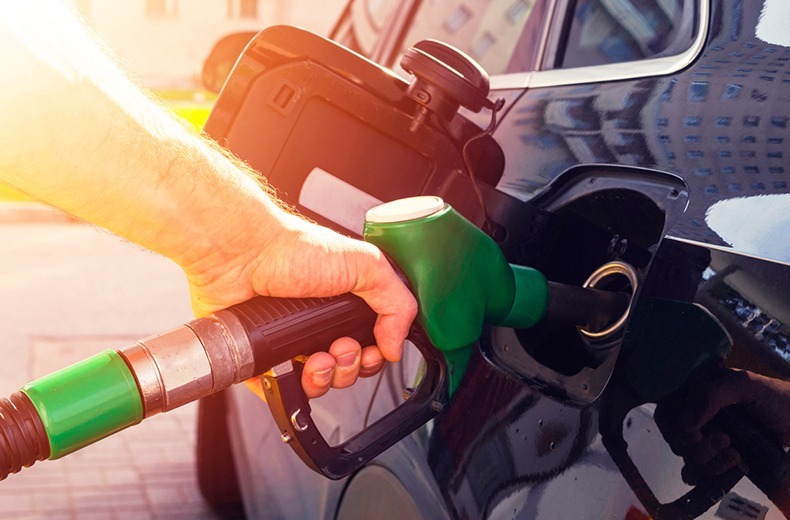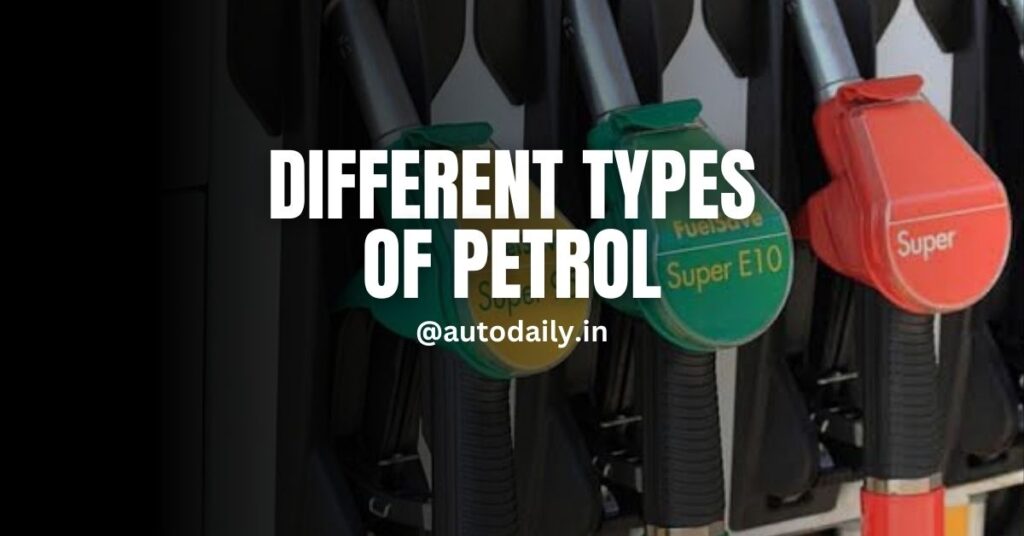Which Petrol is Used in India
Different types of Petrol
Petrol, also known as gasoline, is a key fuel that fuels a large fraction of the world’s automobiles. It is the lifeblood of numerous vehicles throughout the world, powering our automobiles, motorbikes, and other kinds of mobility. Petrol is refined from crude oil and comes in a variety of forms, each adapted to individual engine specifications and performance objectives. Understanding the differences between these gasoline kinds is critical for increasing engine efficiency and assuring compatibility with various vehicle types. While most of us are familiar with the generic word “petrol,” there are numerous other types of gasoline available, each with its own set of features and applications. From standard unleaded gasoline typically found in daily vehicles to high-octane racing fuels built for top performance, we’ll take a deeper look at the various types of gasoline in this blog, learning about their compositions, octane ratings, and how they affect engine performance.

The best suited type of Petrol is mainly depending on the vehicle compression ratio. The compression ratio, represents the ratio of the cylinder’s highest volume (when the piston is at the bottom dead center) to its minimum volume (when the piston is at the top dead center), is a crucial metric in internal combustion engines. It expresses how much the air-fuel combination is compressed before ignition as a numerical ratio (e.g., 10:1). Higher compression ratios result in more efficient combustion and better engine efficiency in general, but they also need careful engineering to avoid knocking or pre-ignition. Proper compression of petrol is crucial to minimize fuel wastage and extract maximum power.
1. Regular Unleaded Petrol
Regular unleaded gasoline is the most extensively used and generally accessible type of fuel for internal combustion engines worldwide. It is the standard fuel for the vast majority of passenger cars, finding a compromise between cost-effectiveness and performance. Regular unleaded gasoline is mostly made up of hydrocarbons extracted from crude oil via a refining process. Distillation, cracking, and other treatments are used in the refining process to produce a variety of hydrocarbons with varied chain lengths. Small quantities of additives may also be added to improve specific features, such as corrosion resistance and combustion efficiency.
The octane rating of gasoline is an important metric that indicates its resistance to early combustion or engine knocking. In INDIA, regular unleaded petrol has an octane rating of 9, which is a standard metric used to evaluate the fuel’s performance. This octane rating is suitable for a wide variety of automobiles with mild compression ratios. Regular unleaded gasoline is engineered to ignite at a specified moment in the compression stroke of the engine. Controlled combustion ensures that the fuel burns effectively and efficiently, generating energy to power the vehicle. While ordinary unleaded fuel has a lower octane rating than premium varieties, it is acceptable for the majority of engines used in common automobiles. While ordinary unleaded gasoline fulfills many vehicle performance criteria, it may include a small amount of ethanol as an additive, commonly up to 10% (E10). The goal of this ethanol mix is to minimize greenhouse gas emissions and reliance on fossil fuels.

For engines with lower compression ratios, most manufacturers suggest standard unleaded gasoline. Using a gasoline with a higher-octane rating than required does not always result in additional benefits and may result in more costs for the motorist. Regular unleaded gasoline is cost-effective for both customers and fuel retailers. Its manufacturing requires fewer refining operations than higher-octane fuels, which contributes to its cost. This makes it an affordable option for everyday commuting and long-distance travel, satisfying the fundamental fueling requirements of a diverse audience.
2. Premium Unleaded Petrol
Premium unleaded gasoline, typically seen as a step above standard unleaded, meets the demands of high-performance and luxury automobiles. Its higher-octane rating leads to improved engine efficiency and resistance to knocking, making it a popular option among drivers looking for maximum performance. Premium unleaded gasoline has a similar basic makeup to normal unleaded, consisting mostly of hydrocarbons obtained from crude oil. However, its higher-octane rating is the primary differential, obtained through extra refining operations that help remove contaminants and provide a more consistent gasoline quality.
The premium unleaded has a higher rating of around 95. Because of the increased octane level, the gasoline can handle greater compression ratios in sophisticated engines without early combustion or knocking. The fundamental benefit of premium unleaded gasoline is its potential to improve engine performance. As a result, cars intended for premium gasoline typically have smoother acceleration, increased fuel economy, and greater overall engine response.

Premium unleaded gasoline is often suggested for vehicles with high-performance engines, such as luxury automobiles, sports cars, and some high-end SUVs. These engines frequently incorporate sophisticated features like as turbocharging or greater compression ratios, which benefit from premium fuel’s improved anti-knock qualities. While the advantages in fuel economy may not be significant for every car, certain high-performance engines are tuned to extract maximum efficiency while driving on premium unleaded gasoline. Under certain driving situations, enhanced combustion characteristics may lead to improved fuel economy.
Because of the greater refining and octane improvement methods, premium unleaded gasoline is often more expensive than ordinary unleaded. For drivers of high-performance automobiles, however, the additional expense may be justified by better engine performance and possible fuel efficiency advantages. Drivers must follow the fuel recommendations set by car manufacturers. Using a lower octane gasoline than suggested might result in engine knocking and decreased performance, but using a higher-octane fuel may not give substantial additional benefits.
3. Super Unleaded Petrol
Super unleaded gasoline, sometimes known as “ultra, ultimate, or power” gasoline, is a premium alternative among car fuels. This petrol has an increased octane rating and is designed for high-performance and specialized engines, providing better combustion characteristics to maximize engine performance. Super unleaded gasoline is also made up of the same hydrocarbons as normal and premium unleaded gasoline and is derived from crude oil refining. Its much higher-octane rating, attained via additional refining methods to assure a purer and more consistent gasoline quality, distinguishes it.
The hallmark of super unleaded petrol is its impressive octane rating, typically around 100 or more. Because of its high-octane level, it is appropriate for engines with sophisticated characteristics, such as regulated combustion and resistance to knocking at high compression ratios. Super unleaded gasoline is designed to maximize the performance of high-performance engines. Superior combustion characteristics result in smoother acceleration, better throttle response, and increased overall engine economy. It’s especially useful for sports cars, premium automobiles, and engines with forced induction.

Super unleaded gasoline is suggested for vehicles equipped with high-performance. Engines that use modern technologies like turbocharging, supercharging, or variable valve timing it is must. These engines frequently work at greater temperatures and pressures, and the higher-octane rating aids in the prevention of early combustion. While the fuel efficiency gains may not be as pronounced as with racing fuels, super unleaded gasoline can help improve fuel efficiency in high-performance engines. Controlled combustion enables finer tuning, improving the air-fuel combination and, as a result, increasing economy under particular driving situations.
Super unleaded gasoline is usually more costly than normal and premium unleaded gasoline. The greater price is due to the additional refining procedures and improved quality control techniques used to attain the higher-octane rating.
Join Us : WhatsApp Channel
FAQ
Regular petrol (also known as unleaded petrol) has an octane rating typically around 87. It is suitable for most everyday cars. Premium petrol, on the other hand, has a higher octane rating (usually 91 or 93) and is recommended for high-performance or luxury vehicles. It helps prevent knocking and improves engine efficiency.
The octane rating indicates a fuel’s resistance to knocking or pre-ignition. Higher octane fuels are less likely to cause knocking, which can damage the engine. However, using higher octane fuel than required does not necessarily enhance performance.
BS4 (Bharat Stage 4) and BS6 (Bharat Stage 6) refer to emission standards. BS6 petrol has significantly lower sulfur content and reduced emissions of harmful pollutants. It is more environmentally friendly but may be slightly costlier.
Adulterated petrol, which contains impurities or additives, can harm engine components. It may cause knocking, reduced fuel efficiency, and increased emissions. Always buy petrol from reputable fuel stations.
Ethanol-blended petrol contains a percentage of ethanol (usually E10 or E20). It is more eco-friendly and can reduce greenhouse gas emissions. However, it may slightly lower fuel efficiency due to its lower energy content.
Additives in premium petrol enhance engine performance, reduce carbon deposits, and improve fuel efficiency. They also help maintain fuel system cleanliness.
Older cars without advanced engine management systems usually perform well with regular unleaded petrol. Using higher octane fuel may not provide significant benefits.
High-quality petrol with the right octane rating ensures proper combustion and reduces wear on engine components. Poor-quality petrol can lead to premature engine damage.
Electric and hydrogen-powered vehicles aim to reduce dependence on fossil fuels like petrol. As technology advances, we may see a gradual shift toward cleaner alternatives.
Consider your vehicle’s requirements, manufacturer recommendations, and local fuel availability. Regular unleaded petrol is suitable for most cars, while premium variants are best for specific engine types.

